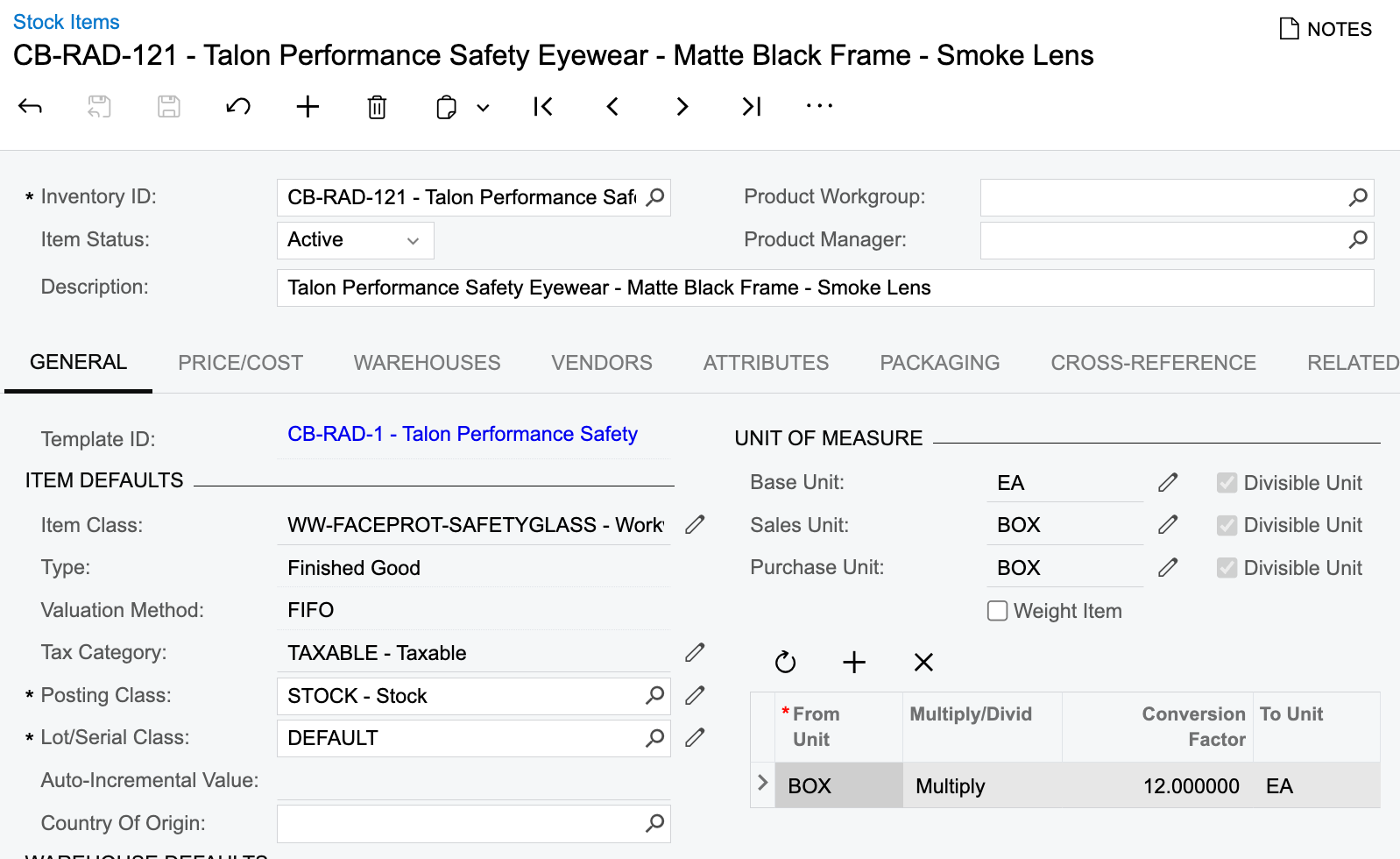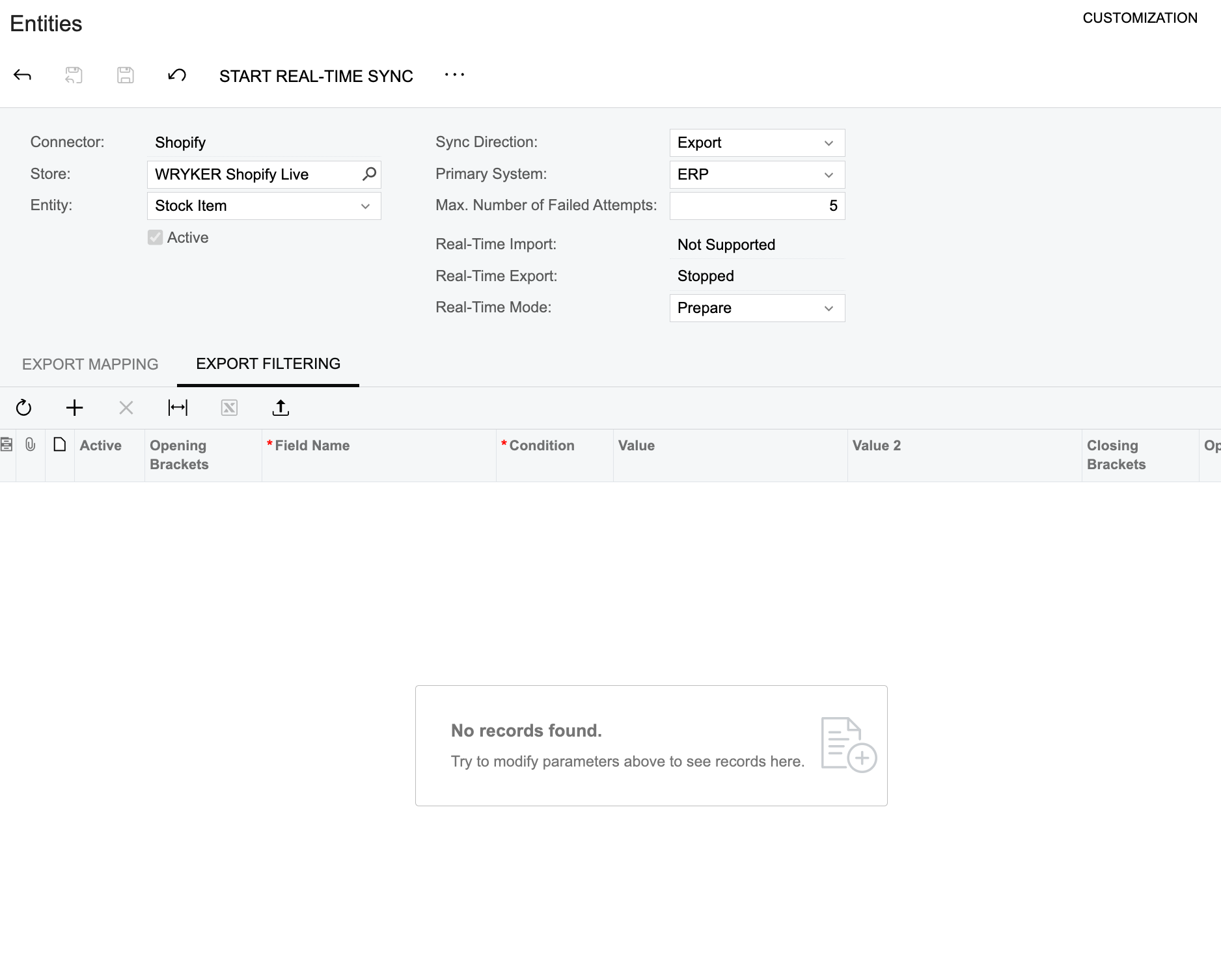Hi all! We are currently on 2023R1 and plan to upgrade to 2023R2 very soon.
We have a group of products - safety glasses - that have pricing set by the pair of glasses, but we sell them in box quantity of 12. In the individual stock items and the template items when applicable, the conversion is set with EA as the base unit, BOX as the sales and purchase unit. The EA to BOX conversion is defined. When we export these glasses to the website, the price and product availability are showing up as the Base Unit instead of the Sales Unit, which is not what we want. We would like the export to shopify to use the Sales Unit.
I’m providing a few screenshots here to illustrate the relevant details:







Does someone here know if this issue will be resolved when we upgrade to 2023R2? Or do we need to customize the export mapping to account for this?
Thank you!
Julia
Best answer by Yuri Karpenko
View original






